Chapter 9: Lifeline, A Water Storytelling Project
Returning to the Po River and learning about the ancient local practice of the meatori...
Dear friends,
I just returned from an enthralling and transformative trip with the Po River. I say “with”, because that’s how it felt as I met up with this ancient and enduring waterway in Turin, Felonica, the Po Delta, and eventually in Venice.
Along this research trip, I have been guided by the Italian verb tramandare, “to pass between hands,” which is frequently used when locals share stories about the Po (see chapter 1). This is a central theme in the project and it is how I have come to meet the Po’s community and those who are dedicating their lives to the river, as I collect their water stories. One introduces me to another and quickly the project’s family is growing and we are all connected by the river.
In this chapter we visit Felonica, located on the Po River in the Province of Mantua in Lombardy. I went there to learn more about the “meatori”, an ancient local practice. The meatori measure depths of the river and marking the navigable channel daily, notating the river as it constantly re-draws itself . “The Po is a watercourse defined as free flowing and with a moving bottom. These characteristics, which make it unique among the main European rivers, determine the variation of the navigable canal which in turn must be constantly monitored and reported. Nowadays the work of the meatore is carried out by operators employed by the AiPo, with more technological means. “- Vittorino Malagò, Surveyor at AiPo.
Vittorino introduced me to his cousin, Meatore Gastone Malagò, who after 40 years has recently retired. In our interview, he reflected on his intimate relationship with the river and the changes he has experienced there in his lifetime. For three generations, his family members have measured the Po River and and carefully watched its flow, rise and fall. He told me that many of the fish, eels and bird species he knew are now gone, and in the winter you can see evidence of pollution clearly, such as plastic garlanding the trees and brush along the shore, carried in with the waters and caught by the branches. He talked about all the Po provides for its community–wood, sustenance, water, jobs and more and how essential it is that we respect the river.1
Here is a brief video from our conversation, in which Gastone speaks about watching the ever-changing river.
Gastone demonstrates how the meatore sometimes still use rods or sticks to measure the depth by hand in the traditional way in combination with electronic devices.
I’m grateful to Vittorino and Gastone for their generosity in sharing their water stories, along with Roberto Orsatti, President of the Canottiere La Folaga, and Marcella Ferarri, my wonderful project manager, who took all of the Po River photos in this chapter.
This sand bar emerges from the Po near Felonica and changes every day with wave patterns drawn by its currents. It inspired my recent artwork below.
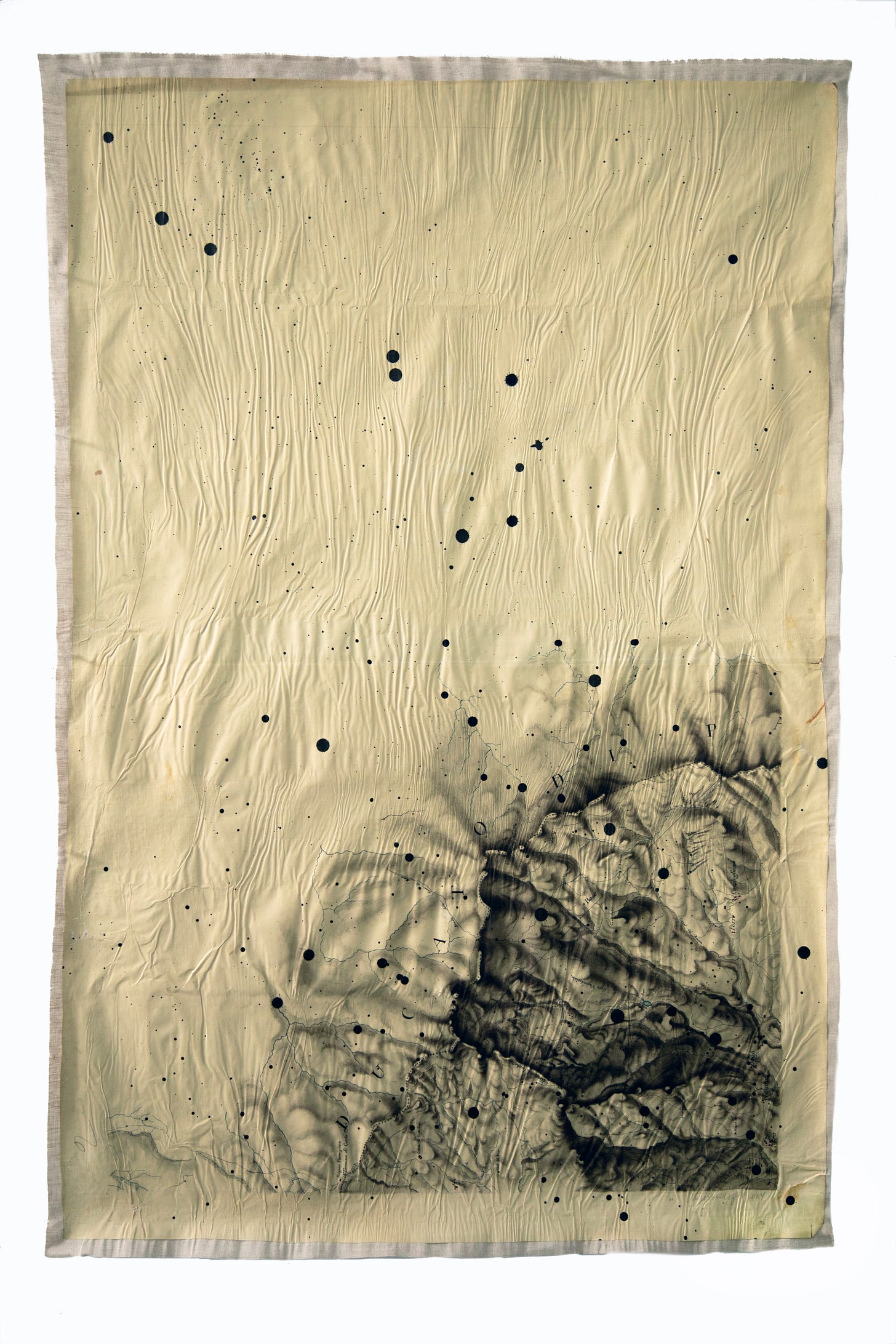
In this recent work, water expresses itself on a historical printed map from the State Archives of Turin, connecting two moments in time, past and present. I added the black shiny Sumi ink stars to bring us in to celestial perspective.
Thank you for joining me here and I look forward to sharing water stories from my return to the Po Delta in the next chapter. Feel free to share this with friends and I welcome your comments and questions below!
Love and thanks,
MM
*These interviews will eventually be presented in a film that is being made in parallel with the project.

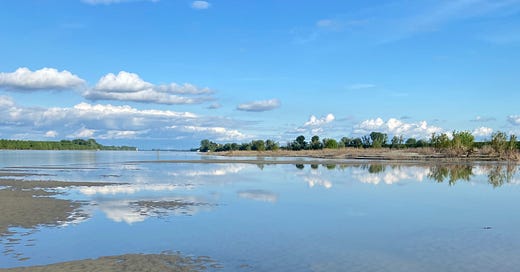




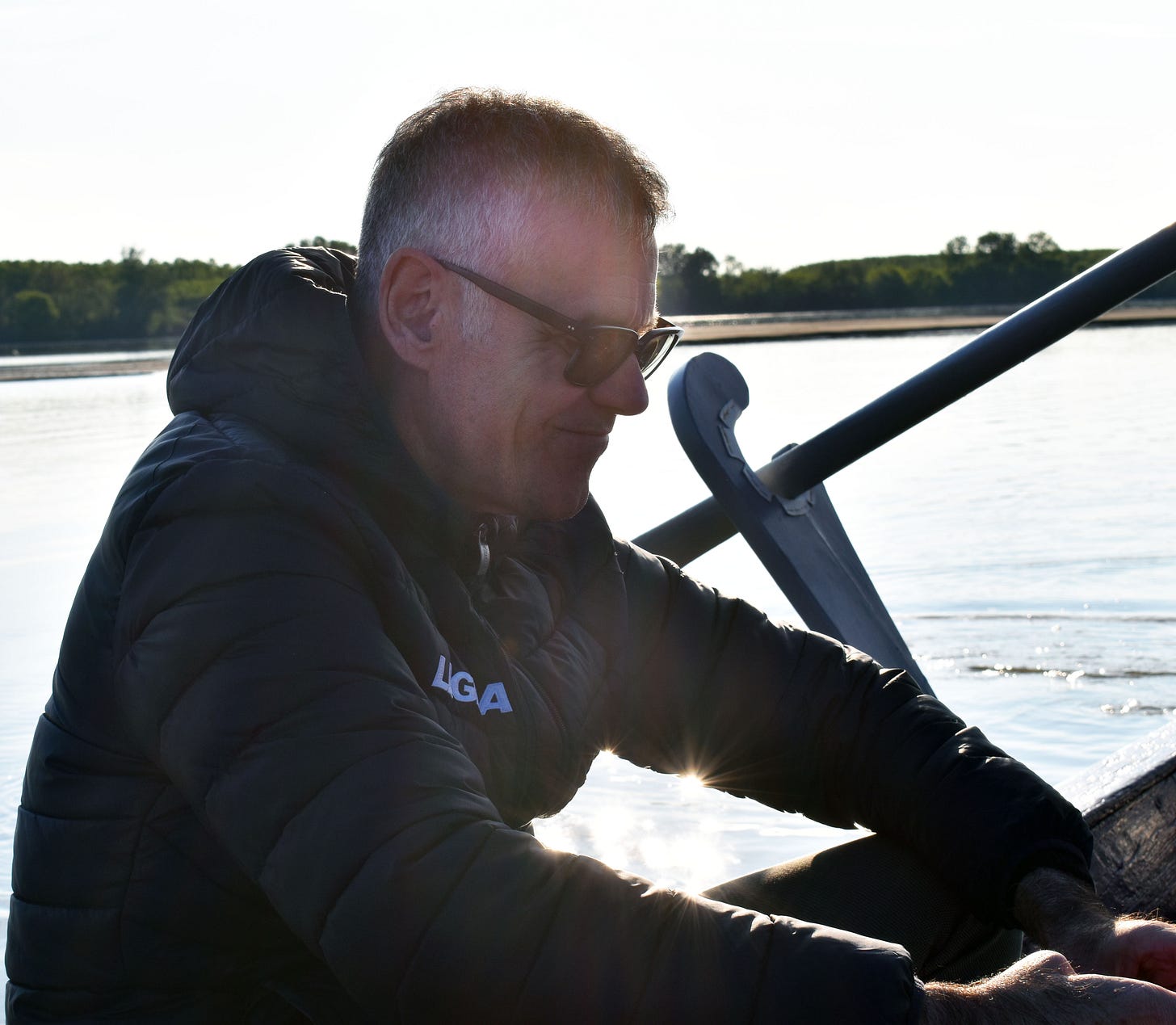
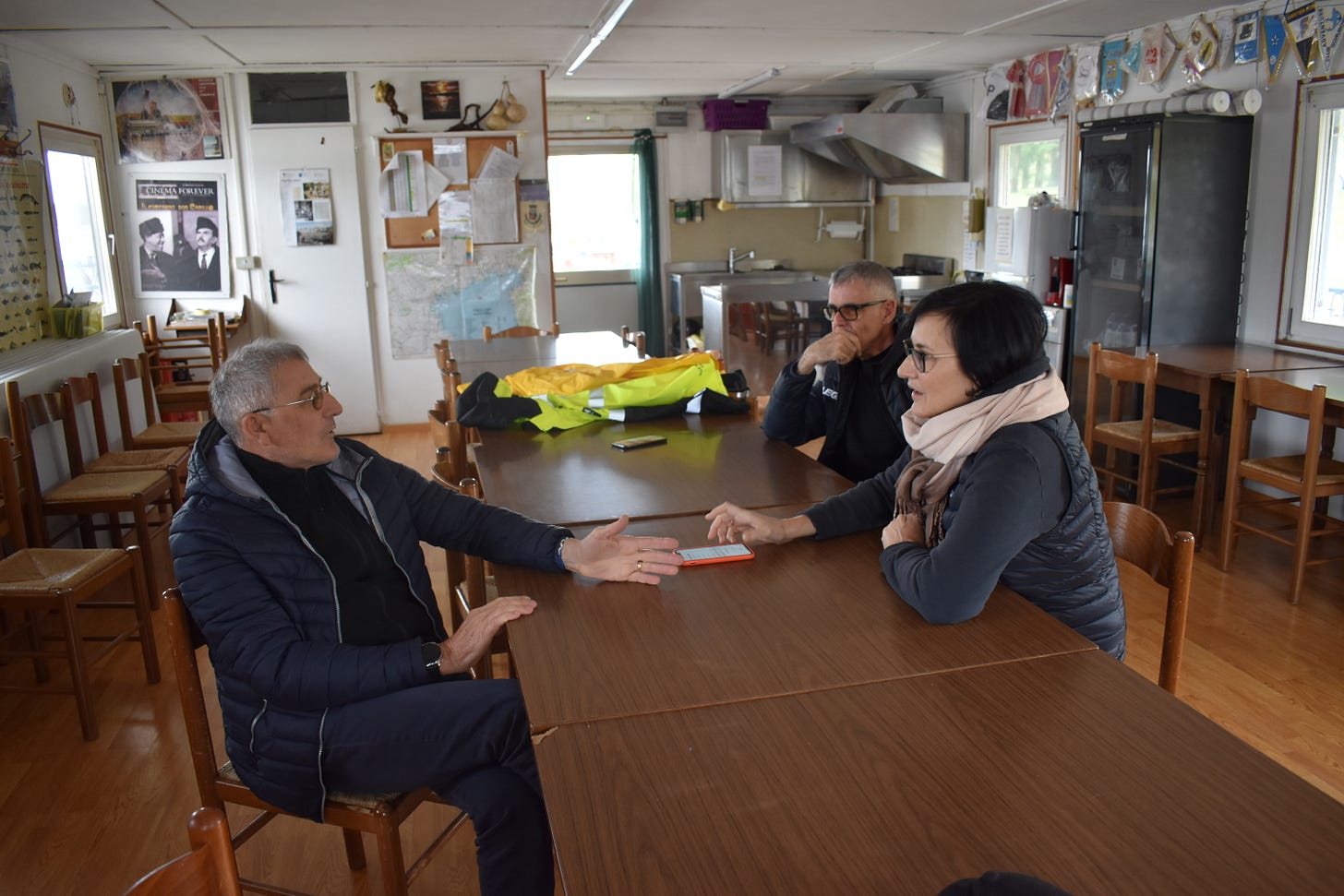
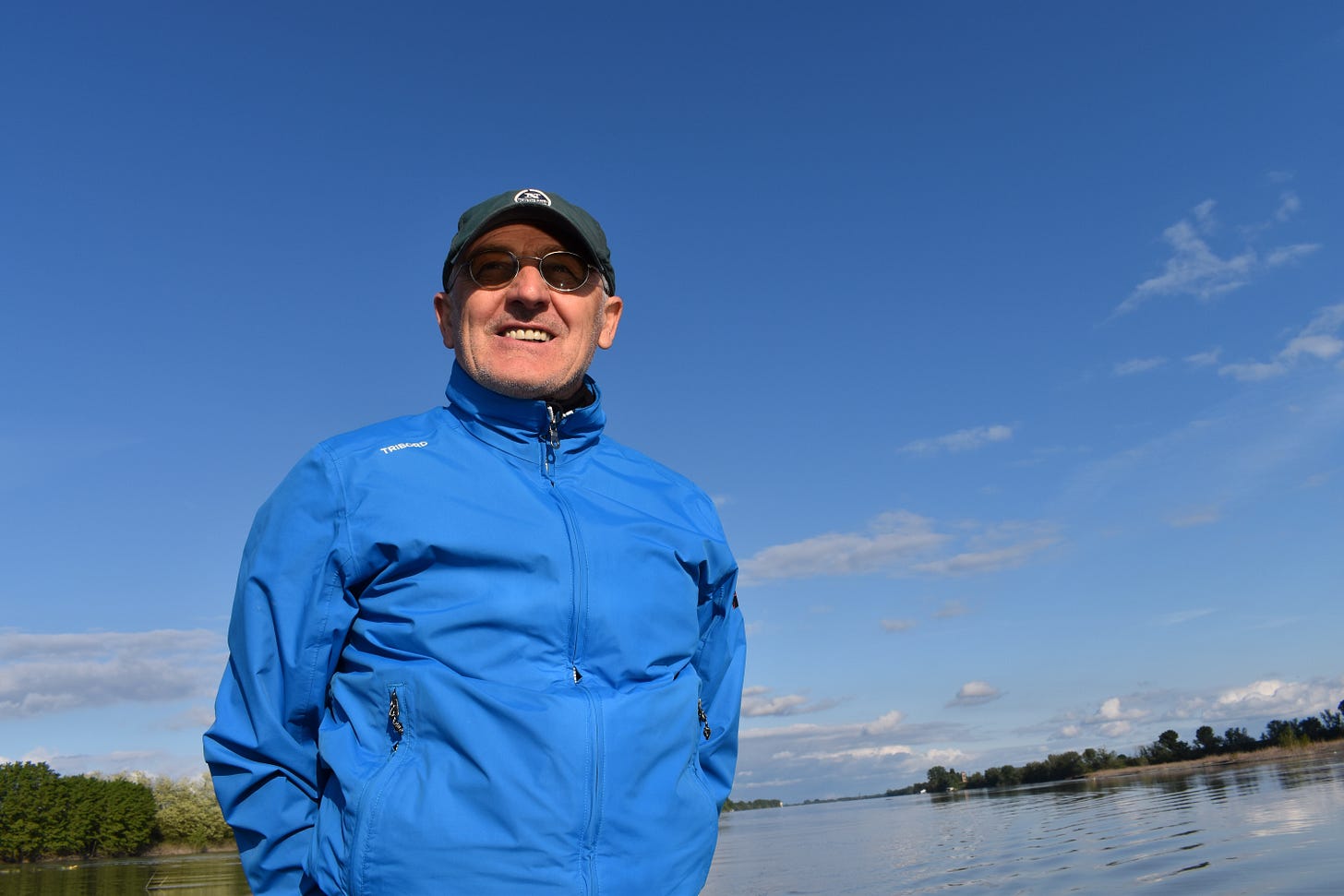
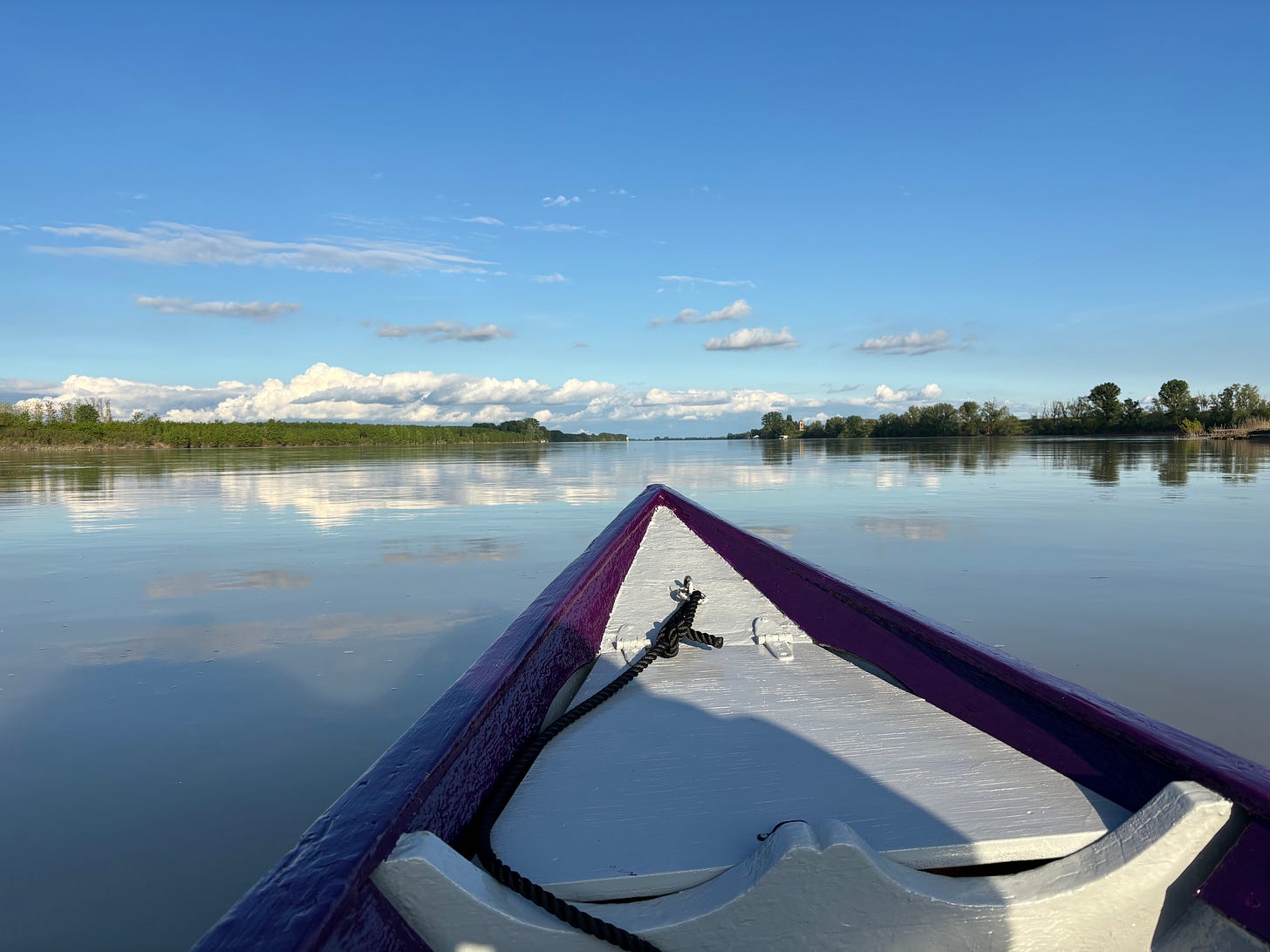
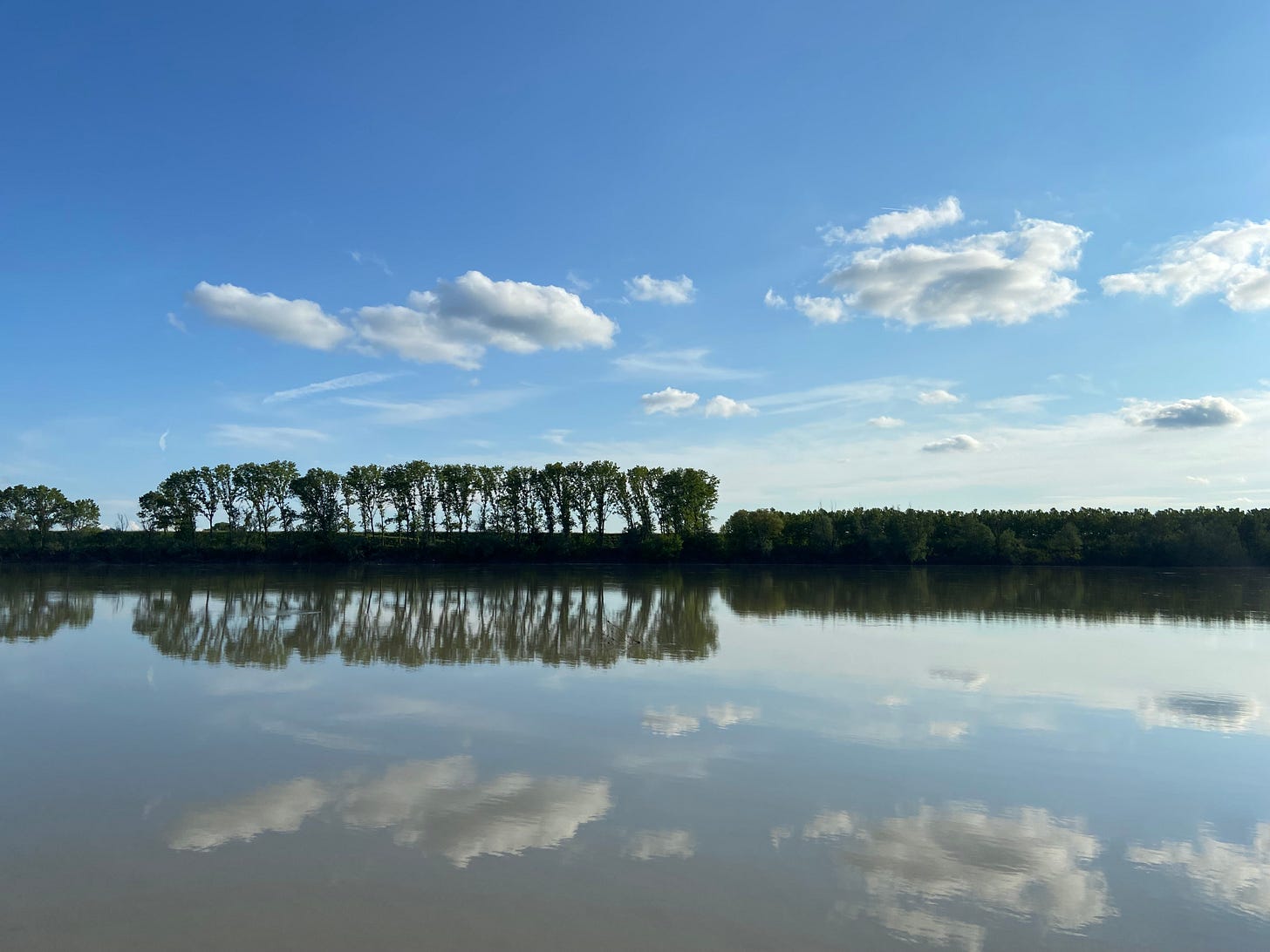
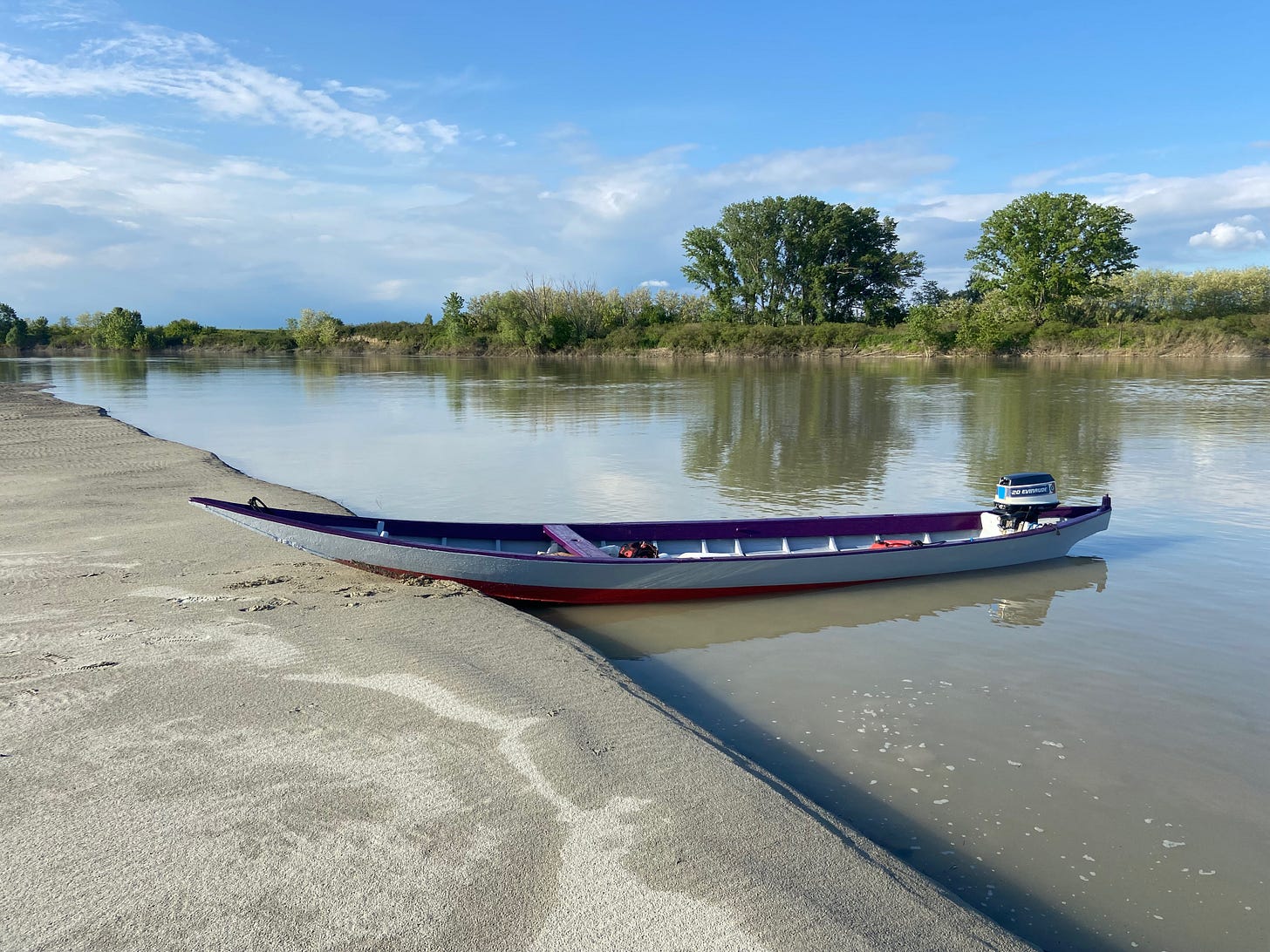
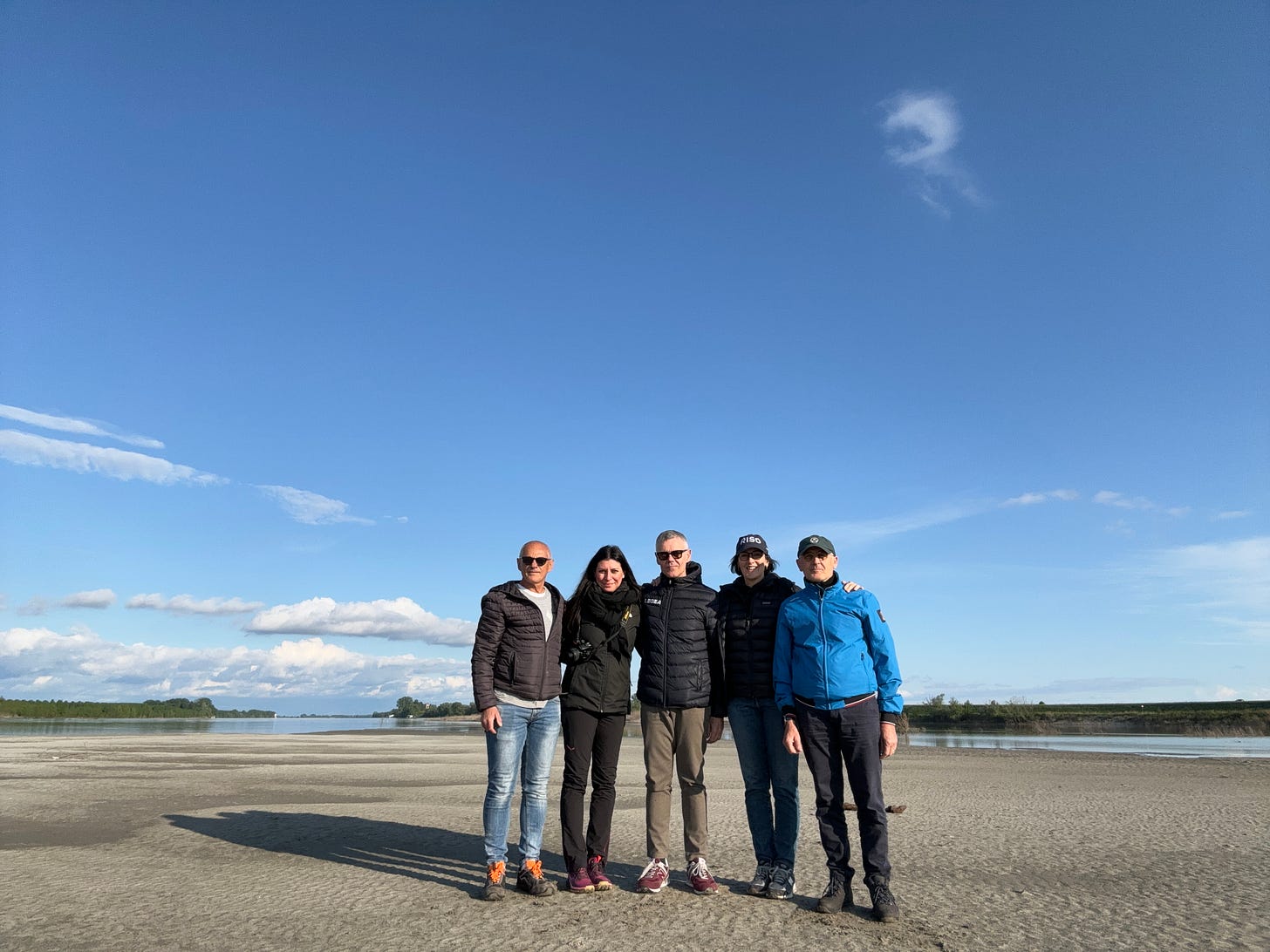
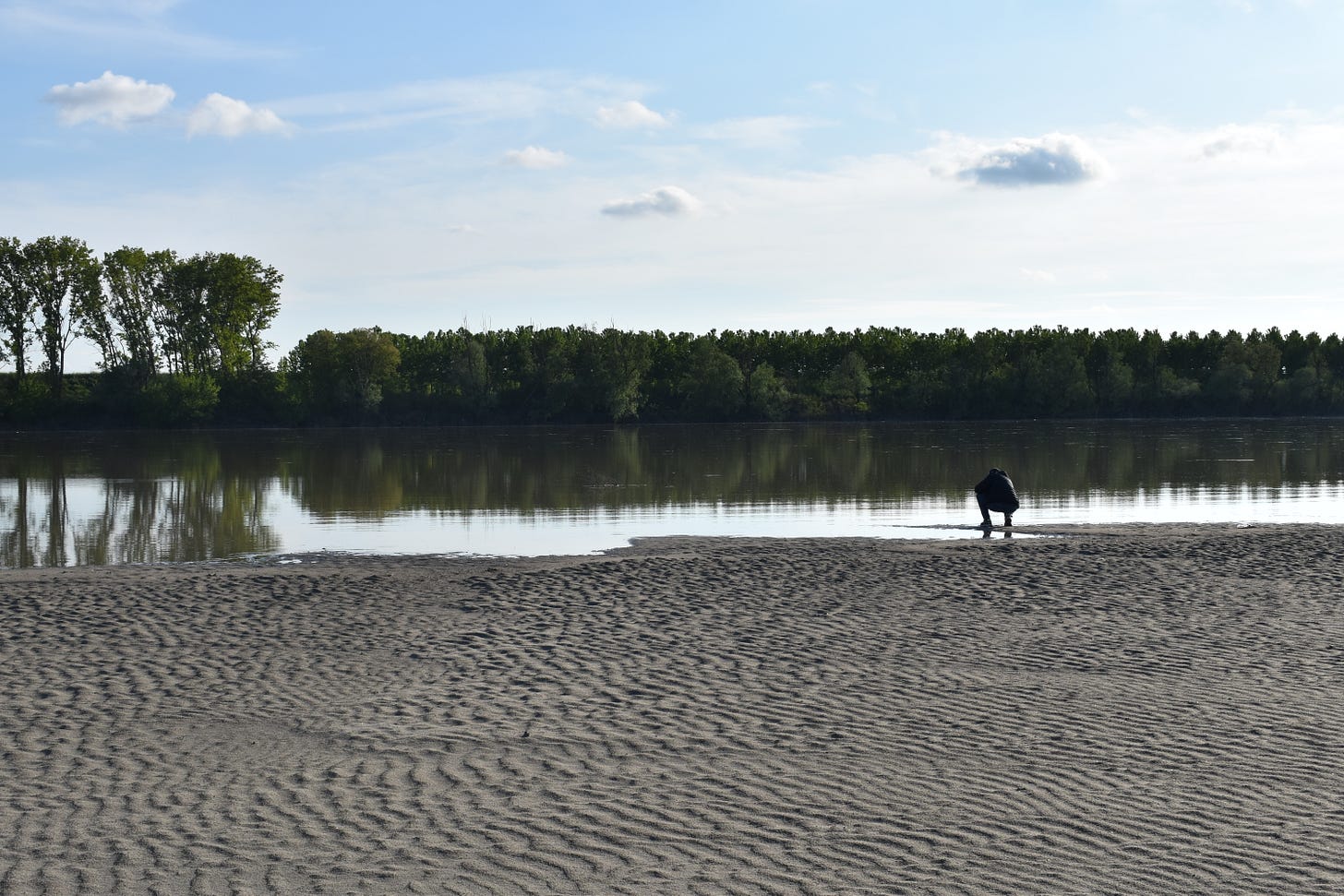
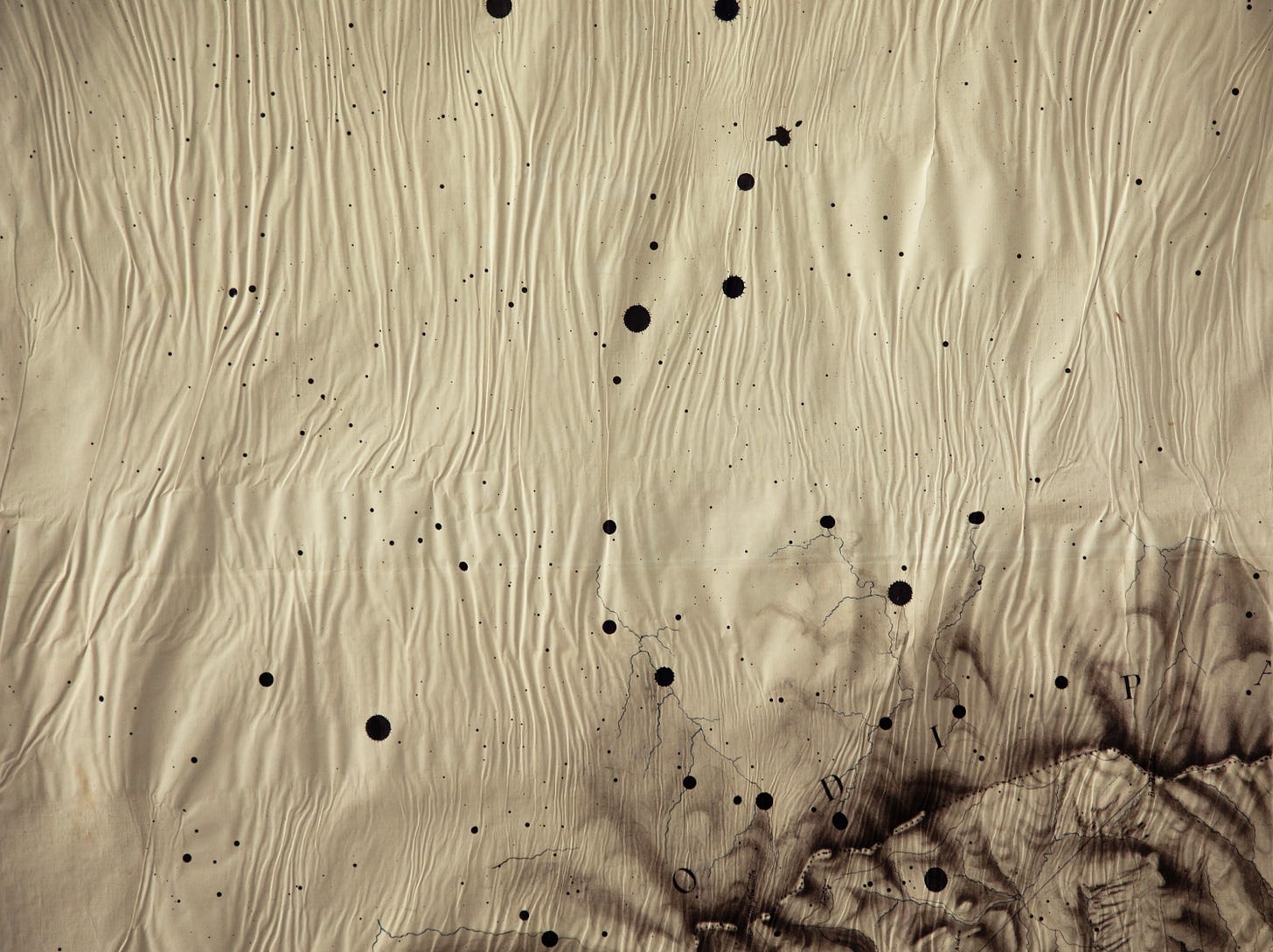
Yes, the purple boat.
So inspiring, Melissa. I absolutely love the Sumi ink print. It’s powerful!